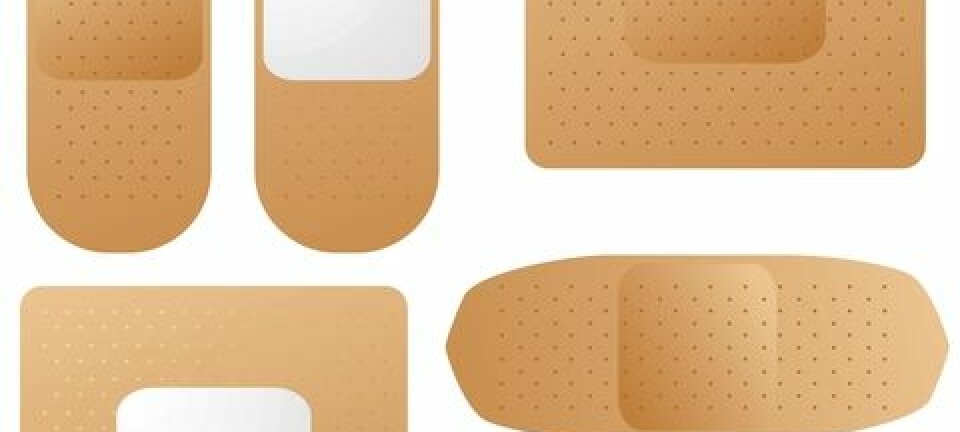
New micro pills make swallowing easy
New research project aims to make pills easier to swallow by encapsulating medicine in micro-containers. The containers can be used for all types of medicine – including those currently taken by injection.
Pills aren’t always the easiest things to swallow. Even if you place a large painkiller at the back of your tongue and wash it down with a big glass of water, it still feels as if the pill has a life of its own, clinging desperately to the inside of the gullet all the way down to the stomach.
Despite great medical advances in recent decades, the way we take our medication in the form of pills has remained unchanged. It is still just as unpleasant as it used to be; however, this may soon change.
Researchers at the Technical University of Denmark (DTU) and the University of Copenhagen are currently trying to make pills 100 times smaller while also making them so versatile that potentially all forms of medicine can be taken with these new ‘micro pills’.
Even insulin could go into the micro pills
One of the researchers behind the project outlines the ambitions:
The really hot topic in this context is of course insulin for diabetic patients. We’re also aiming to make insulin swallowable with our micro pills.
“My vision is that we’ll be able to replace virtually all medication currently taken as pills or via injection with tiny micro pills that are easier to swallow and which also boost the absorption of the drugs,” says Stephan S. Keller, a senior researcher at DTU Nanotech.
“The really hot topic in this context is of course insulin for diabetic patients. We’re also aiming to make insulin swallowable with our micro pills.”
Thinking outside the medical box
Keller and his colleagues aim to break with centuries of conventional thinking in the pharmaceutical industry by designing a more effective way of taking medication.
In addition to sometimes being big and clumsy, conventional pills also have other weaknesses:
Not only do the containers protect the medicine from the gastric juices; we are also working on designing the containers in a way that makes them stick to the inside of the intestinal wall and release the medicine directly onto the surface of the intestinal wall. It’s the same principle used with nicotine patches, where the nicotine is released directly onto the skin.
- It is sometimes difficult for the active ingredients to reach the intestine, which is where the medicine is absorbed into the bloodstream. This is because the pills dissolve in the stomach, where the active ingredients are broken down by gastric juices and thus never reach the intestine.
- Many forms of newly-developed drugs are poorly soluble in water. This means that the medicine is also poorly soluble in the intestine and often goes out with the stool before the body can absorb it.
- Some drugs are absorbed at specific sites in the intestine. This is a great challenge, since the intestinal fluids are in constant motion.
These challenges are usually overcome either by injecting the medicine with a needle or by overdosing to ensure that sufficient amounts of the drug reach the intestine.
Keller and his colleagues are looking into an alternative way of overcoming these challenges:
”The idea is to make micro pills in a biodegradable material that can survive the journey through the gastric juices and cling onto the inside of the intestinal wall where the medicine can be released,” he says.
Tiny medical kits
We have found a variety of ways to fill the containers with medicine in powder or liquid form. One of these methods works like an ink-jet printer, where tiny needles fill the containers with a liquid.
At the core of the new micro pills are tiny biopolymer containers made from biodegradable plastic.
”All components of our biopolymer have already been approved by the Danish Health and Medicines Authority and the US Food and Drug Administration, which makes it easier to get the containers approved for consumption. Since the biopolymer is degradable, neither the body nor nature will be experiencing any accumulation of these tiny medical kits.”
According to Keller, the new micro pills also have a number of other advantages:
- The micro-containers can, in principle, be filled with any kind of medicine and are then sealed with a lid.
- The tiny ‘medical boxes’ are easy to swallow, with each pill being the size of a grain of sand. However, in order to get the same amount of drugs as in a large pill, several thousands of the small pills need to be swallowed.
- After ingestion, the containers protect the medicine from the gastric juices in the stomach, and only when the containers reach the intestine does the lid dissolve and the medicine is released.
”Not only do the containers protect the medicine from the gastric juices; we are also working on designing the containers in a way that makes them stick to the inside of the intestinal wall and release the medicine directly onto the surface of the intestinal wall. It’s the same principle used with nicotine patches, where the nicotine is released directly onto the skin,” explains the researcher.
"A bit like making waffles"
The research project deals with the design of the tiny containers and finding a way of mass-producing them.
One of the techniques the researchers use to do this is known as ’hot embossing’.
With this technique, a heated mould of the tiny containers is pressed into a layer of the biodegradable plastic. Once the biopolymer has solidified, the mould leaves an imprint of the small containers in the plastic.
“It’s a bit like making waffles,” says Keller.
The containers are then filled with medicine and the lid is put on.
”We have found a variety of ways to fill the containers with medicine in powder or liquid form. One of these methods works like an ink-jet printer, where tiny needles fill the containers with a liquid.”
Animal trials underway
The researchers have started testing the new containers on animals. These trials will indicate whether the new pills can be tested on humans.
“We are working with the Faculty of Health and Medical Sciences at the University of Copenhagen, which designs medicine specifically for our micro-containers,” says Keller.
“Then we’ll just have to wait and see if the pharmaceutical industry will be interested in our concept. This is unlikely to happen within the next five years, but perhaps the concept will be accepted in 10-15 years’ time.”
----------------------
Read the Danish version of this article at videnskab.dk
Translated by: Dann Vinther








